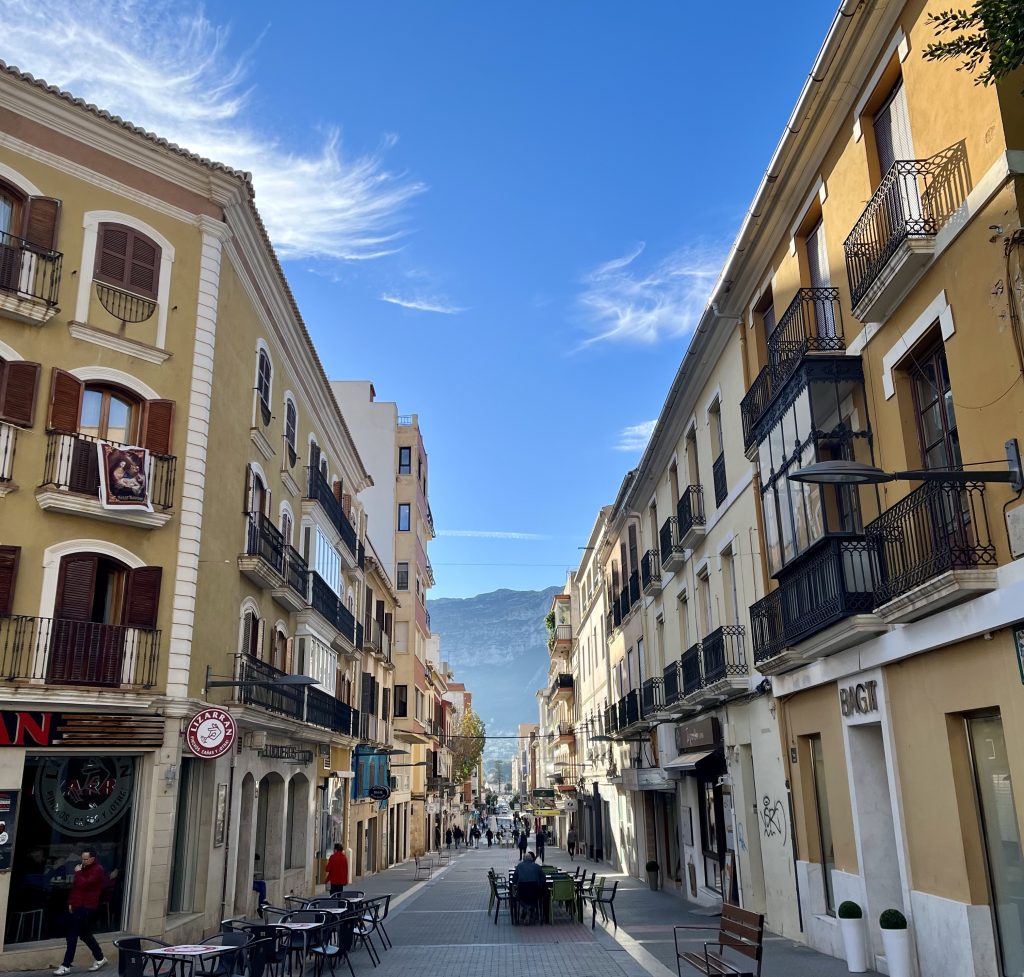
Denia
I went for a wander around Denia this morning, a beautiful sunny day tipped to hit 21° by the afternoon.
I passed the marina, bobbing with yachts of all shapes and sizes, some teetering on the verge of oligarch monstrosity. The London registered Parsifal 111 was parked up, a sleek, gleaming bullet of a thing, on which I won’t waste space here with a picture, but if you’re interested, at this time of year you can charter it for a week for €195,000. Or splash out in high season when it’s not that much more at €235,000. It sleeps twelve, so only about €20k each if you go with a few mates. Thats the cost of living for some.
Most boats appear to be wrapped up for the winter now and the town generally seems much quieter than it surely must be in peak season. But the winter migration season is evident, with small flocks of my fellow snowbirds wandering around.
Further up the town’s coastline, away from the pricey clutter that circles marinas everywhere, the main town was pleasantly quiet, although buzzing with Spanish life. In the covered market people were buying fresh fish, huge plastic flagons of dangerously cheap local wine and there were rainbow spreads of brightly coloured fruit and vegetables that even Waitrose couldn’t match.
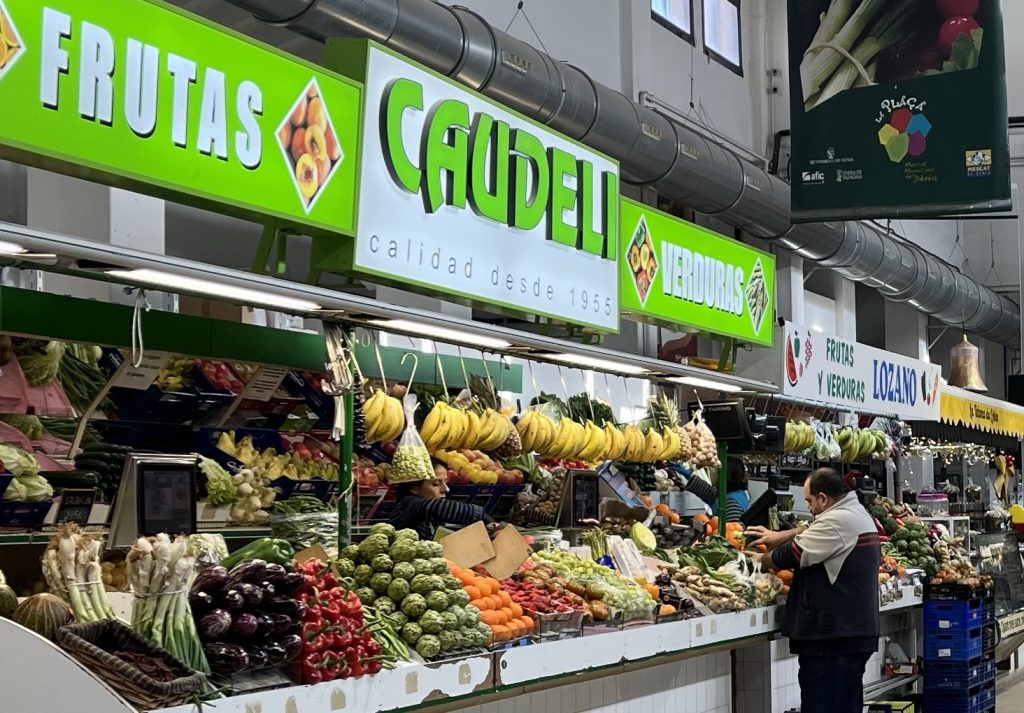
In sunlit streets people were going about their business, some enjoying a coffee and a brandy in the pavement cafes. The peaceful scenes of daily life were only interrupted briefly as I passed the town hall, where a small group waited outside clasping forms and papers. They had the look of people for whom thick, bureaucratic mud was spoiling their day.
Above them, strung across the railings of a balcony, a banner proclaimed that 1,182 citizens of Denia had been the victims of gender violence, each number detachable for easy updating, up or down. I don’t know what period the number refers to but it’s an issue that the municipality commemorates every year on November 25, the International Day for the Elimination of Violence against Women.
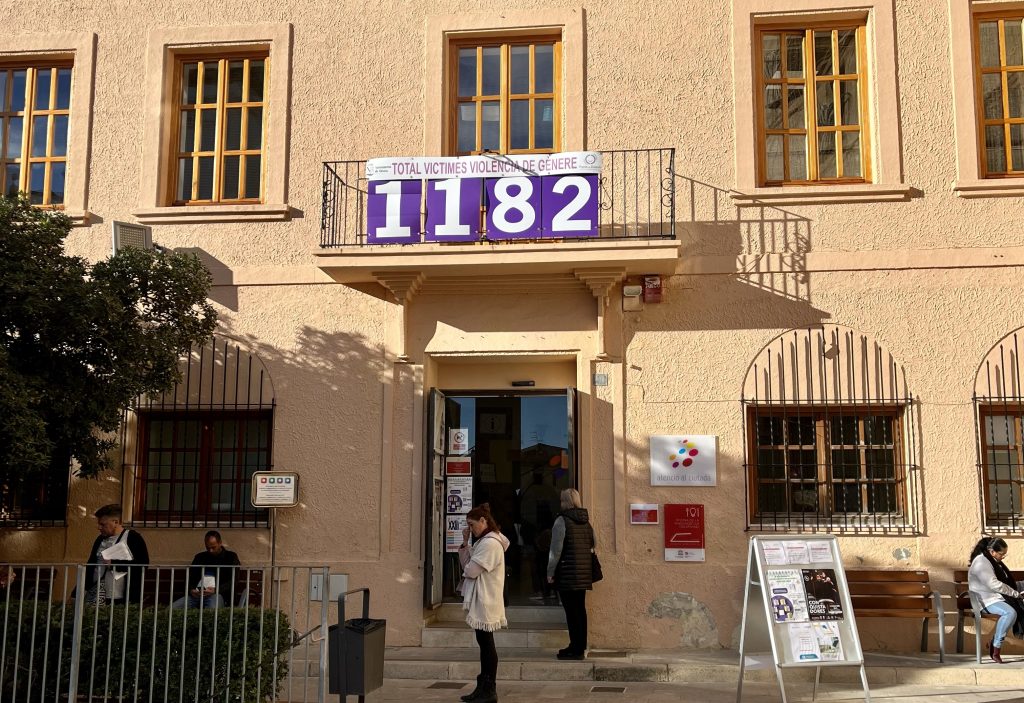
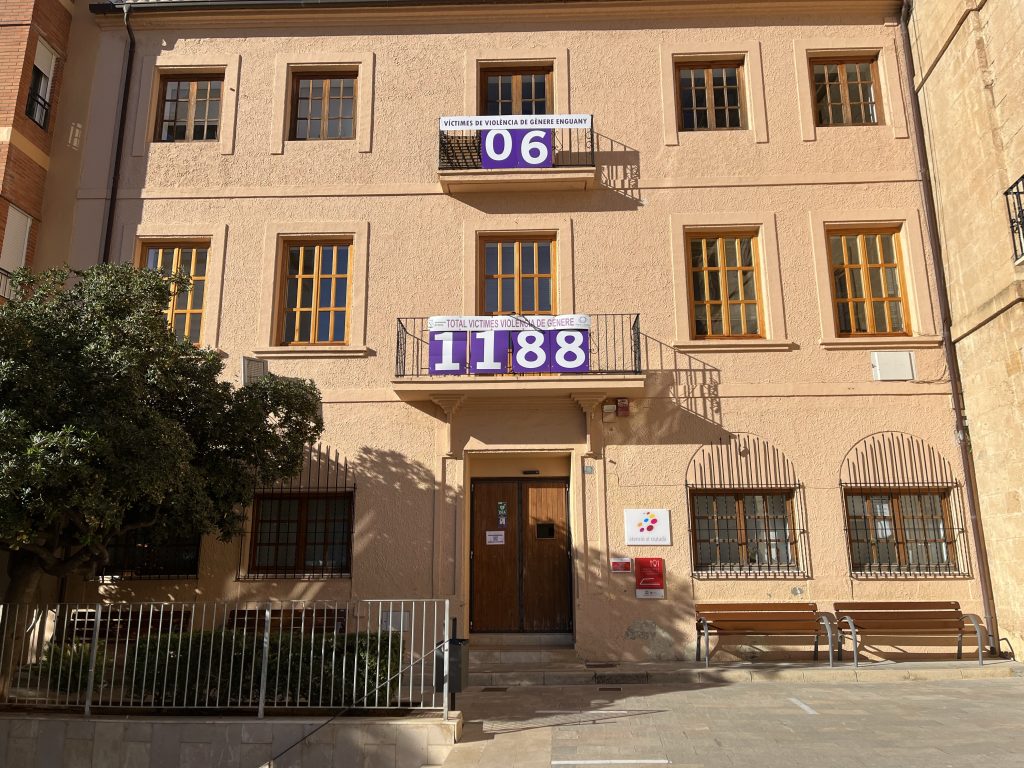
In the background, and from almost every angle in Denia, the Montgó looms large over the town, rising to 753 metres (2,470 ft). It’s an extension of the Betic mountain range, which runs south-southeast through the Iberian Peninsula. It’s one of the range’s last spurs before it disappears under the Mediterranean Sea, eventually popping up again in the Balearic Islands of Ibiza and Formentera around eighty miles away. Ferries ply back and forth from Denia, the main port for the islands.
It was formed around seventy-million years ago and sits in a nature reserve spanning 2150 hectares (5312 acres), complete with important archaeological finds such as cave paintings, Phoenician amphoras and the remains of Iberian settlements. Its wealth of flora, fauna and ecosystems saw it officially designated a protected nature reserve in 1987, with lots of interesting hiking trails to explore. I’ll be up there soon and will post pics etc.
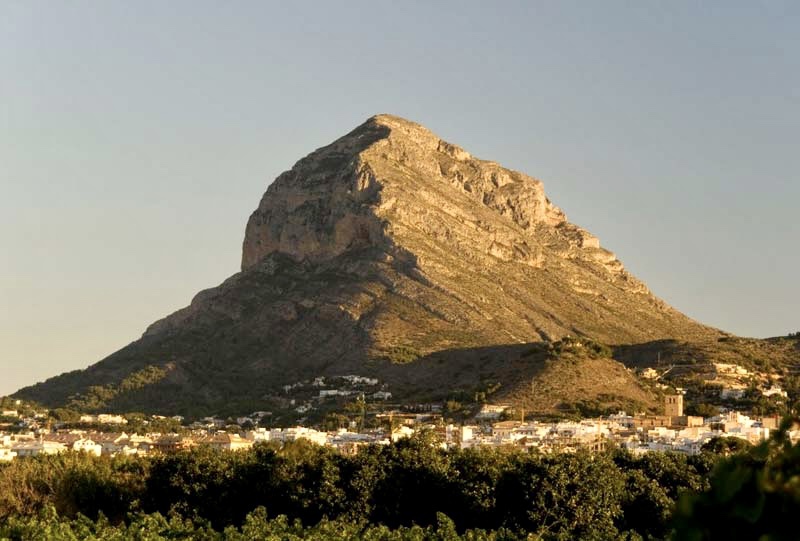
From the town hall I passed through some lovely streets in the old town on my way to the castle, built by the Moors in the 11th and 12th centuries. They ruled Dénia and much of Spain from the 8th to the 13th centuries. It and much of the town was built to provide a bulwark against potential intruders, although the Moors began to scarper in 1244 when Christian forces rolled in and it was retaken.
After a short but steep climb I wandered around the grounds for a while. Its arched entrance is one of the few surviving remnants from Moorish times, with much of what’s left being a mixture of styles developed over several centuries.
Unfortunately, unlike in many countries where there’s usually something in English, all the signage and information displays at the castle were in Spanish, so I wasn’t able to make much sense of it all. I’ll come back another time.
I did three weeks later >link<
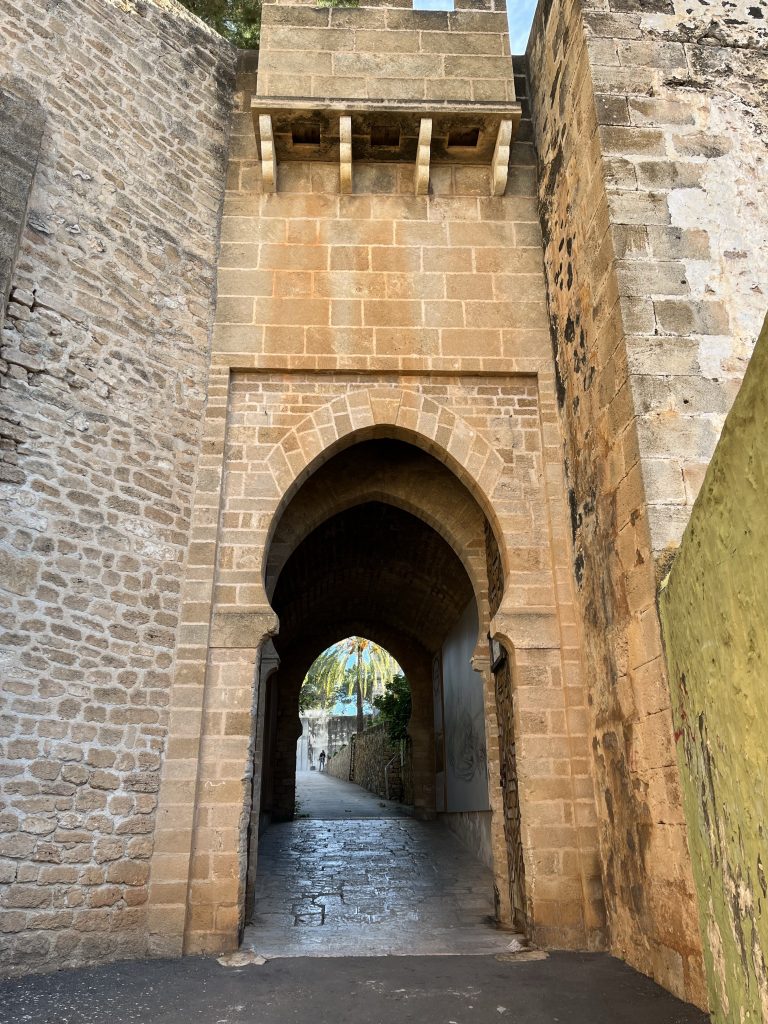
A more recent development, about which I’d read online before I came, is an enormous tunnel that stretches beneath the entire width of the solid rock on which the castle sits, through which I walked this morning (pictured below)
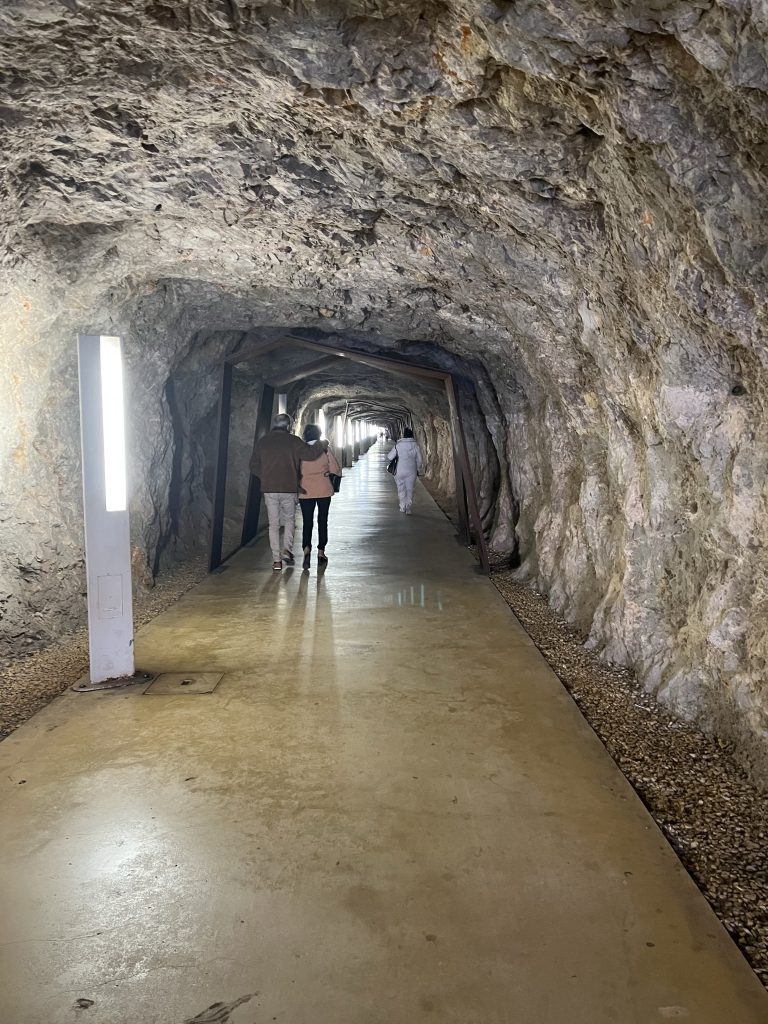
Work on the tunnel started in 1937 following an order by the Ministry of Defence after extensive bombing of towns and civil targets. Local citizens paid for the construction with a fixed contribution from each ration card and the sale of raffle tickets and stamps, such as the one pictured below.
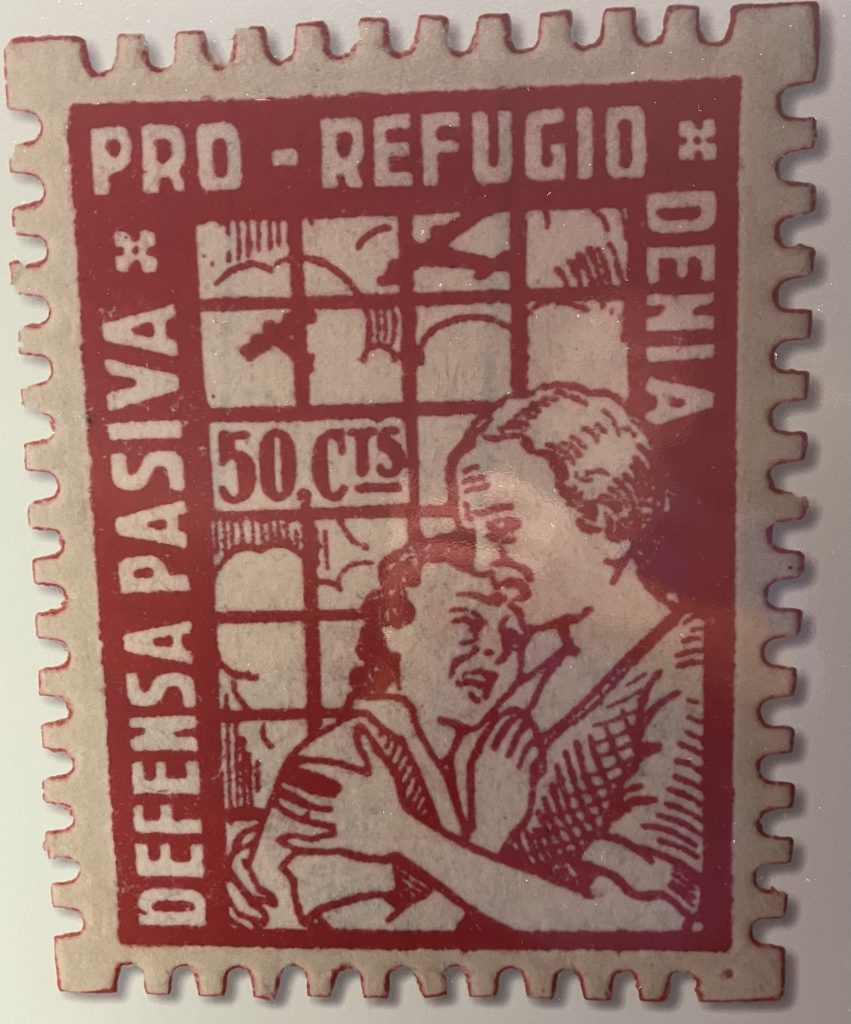
The bombing referred to above occurred during the Spanish Civil War, fought from 1936 to 1939 between Republicans and Nationalists. It began after a coup d’etat against the Republican government by a group of generals of the Spanish Republican Armed Forces, which had limited success. Rebel units existed in many areas of the country, including Valencia, with about two thirds of Spain remaining under government control.
By the end of the war 500,000 people had lost their lives. The victors, the Nationalists, led by General Franco, ruled for thirty-six years until Franco’s death in November 1975, when control of the country passed to King Juan Carlos. Soon after his accession Juan Carlos introduced reforms to dismantle the Francoist regime, which marked the beginning of the country’s transition to democracy.
Blasting with dynamite at both ends of the tunnel lead eventually to over 1,000 cubic metres (2,700 tons), of rock being extracted, facilitated by the unimaginable toil of 87 workers, including tunnel borers, labourers, metal workers etc. They were mostly from Denia but were joined later by refugees, many from Cordoba, who were experts in the use of dynamite. Brigades of volunteers were also formed to clear the excavated stone from the tunnel on Sundays.
The Ministry of Defence also ordered the creation of Local Passive Defence Committees. In 1937, Dénia’s installed shelters in 33 basements under houses and commercial properties. Workers at the port and the F. Sauquillo toy factory, by that time making war materials, had their own shelters.
The population in the surrounding countryside had to hide wherever it could during air raids. A leaflet, sent out by the government, explained how to dig a shelter in the ground.
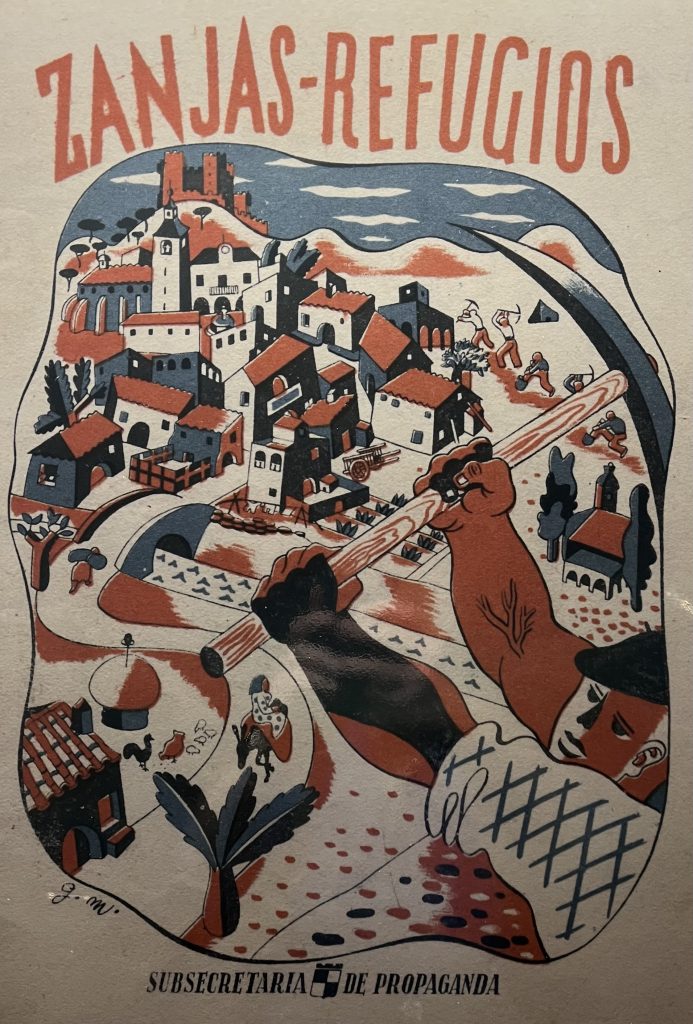
It’s hard to imagine now but, in 1938, nearby Majorca became an airfield for Hitler and Mussolini’s air troops. Denia suffered 37 air raids that left 32 people dead and over 100 injured, although many were saved by sheltering in the tunnel.
On a lighter note, as I wandered back through the town I came across Vicente Buigues Carrio, a famous Spanish ophthalmologist, pictured below. The good people of Dénia clearly thought enough of him to knock up this rather odd looking stone shelf and bust of him on a wall in the old town. The internet provided some helpful insight: ‘he passed away on month day 1986, at age 65 in death place’, whatever that means.
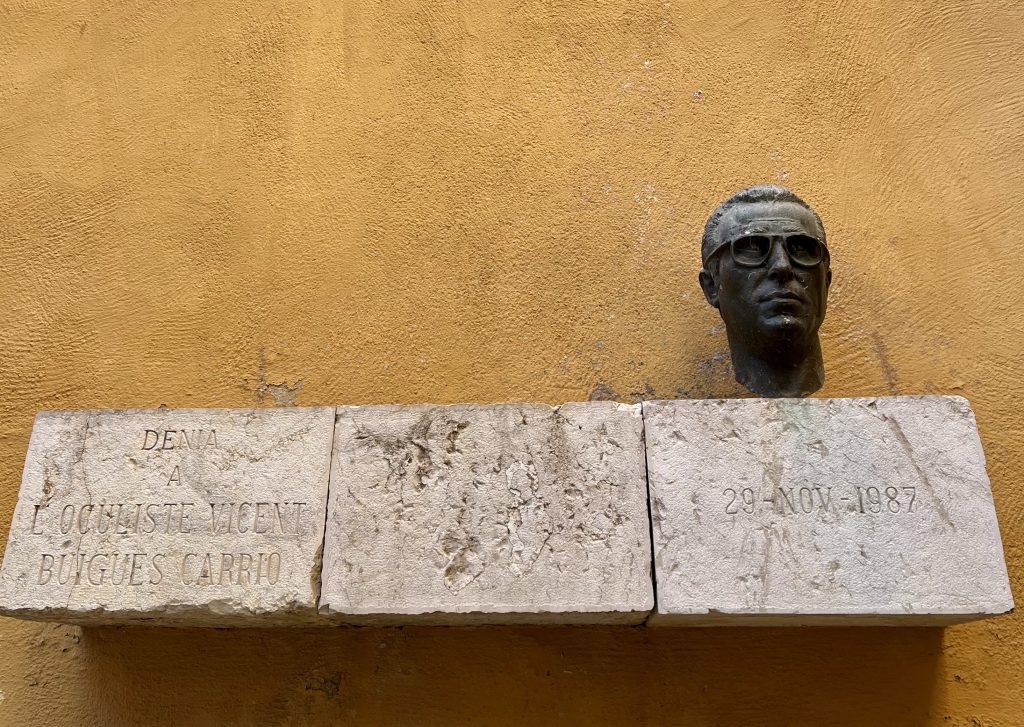
Then I went home for my free lunch. More later.
Great stuff, Andy!
Lonely Planet will have you signed up in no time!
Not at my rates!
Lovely informative account Andy. I wonder what the routes up that mountain are like… it looks steep!
The angle of the photo makes it all look a bit scary but there’s a lot of the Montgo stretching out behind what you see and, fingers crossed, some less challenging slopes more suited to a visitor from somewhere with a free bar. Watch this space! 😜
Liking the trip, feel I am there bathed in warmth and away formed drenched Devo
Such beautiful writing Andy.. Love the ophthalmologist epitaph… made me laugh out loud.
Thank you. As epitaph’s go Spike Milligan’s is my favourite: ‘I told you I was ill’. And he even ventured into ophthalmology with his quirky humour’s twist on an old advertising line that only us oldies will remember: ‘beauty’s in the eye of the beholder, get it out with Optrex’.